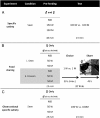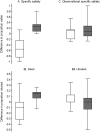Evidence suggesting that desire-state attribution may govern food sharing in Eurasian jays
- PMID: 23382187
- PMCID: PMC3593841
- DOI: 10.1073/pnas.1209926110
Evidence suggesting that desire-state attribution may govern food sharing in Eurasian jays
Abstract
State-attribution is the ability to ascribe to others an internal life like one's own and to understand that internal, psychological states such as desire, hope, belief, and knowledge underlie others' actions. Despite extensive research, comparative studies struggle to adequately integrate key factors of state-attribution that have been identified by evolutionary and developmental psychology as well as research on empathy. Here, we develop a behavioral paradigm to address these issues and investigate whether male Eurasian jays respond to the changing desire-state of their female partners when sharing food. We demonstrate that males feed their mates flexibly according to the female's current food preference. Critically, we show that the males need to see what the female has previously eaten to know what food she will currently want. Consequently, the males' sharing pattern was not simply a response to their mate's behavior indicating her preference as to what he should share, nor was it a response to the males' own desire-state. Our results raise the possibility that these birds may be capable of ascribing desire to their mates.
Conflict of interest statement
The authors declare no conflict of interest.
Figures



Comment in
-
Eurasian jays predict the food preferences of their mates.Proc Natl Acad Sci U S A. 2013 Mar 5;110(10):3719-20. doi: 10.1073/pnas.1300515110. Epub 2013 Feb 20. Proc Natl Acad Sci U S A. 2013. PMID: 23426632 Free PMC article. No abstract available.
References
-
- Wellman HM, Bartsch K. Young children’s reasoning about beliefs. Cognition. 1988;30(3):239–277. - PubMed
-
- Bartsch K, Wellman HM. Young children’s attribution of action to beliefs and desires. Child Dev. 1989;60(4):946–964. - PubMed
-
- Perner J, Leekam SR, Wimmer H. Three-year-olds’ difficulty with false belief: The case for a conceptual deficit. Br J Dev Psychol. 1987;5:125–137.
-
- Wellman HM, Cross D, Watson J. Meta-analysis of theory-of-mind development: the truth about false belief. Child Dev. 2001;72(3):655–684. - PubMed
-
- Astington JW. The future of theory-of-mind research: Understanding motivational states, the role of language, and real-world consequences. Child Dev. 2001;72(3):685–687. - PubMed
Publication types
MeSH terms
Grants and funding
LinkOut - more resources
Full Text Sources
Other Literature Sources
Molecular Biology Databases

